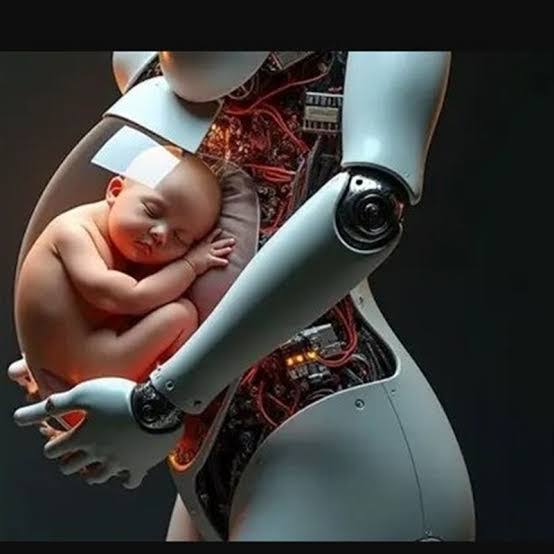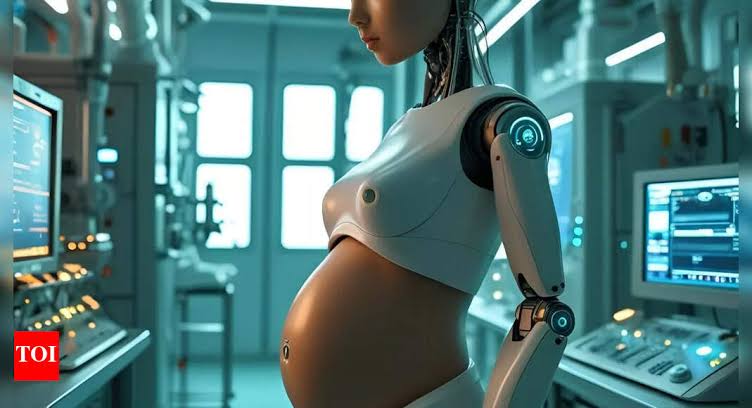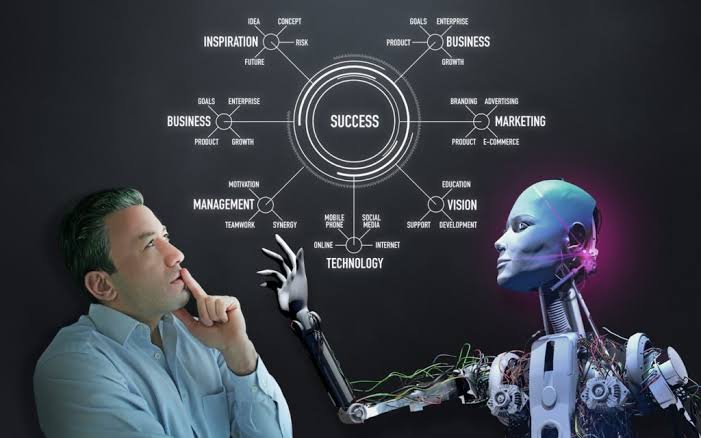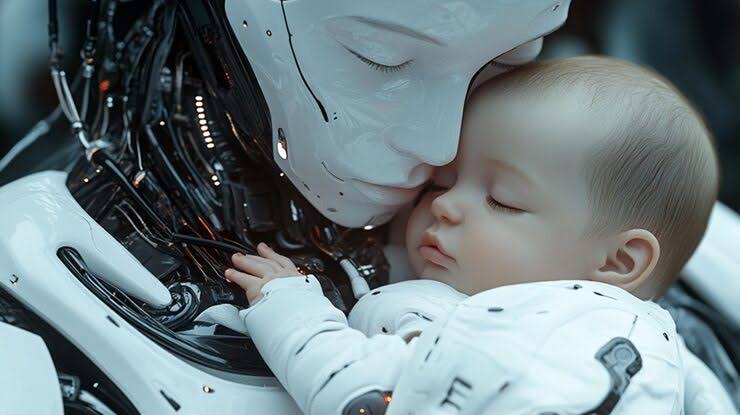Birth Without Women: China’s Artificial-Womb Machine and the Future of Motherhood

INTRODUCTION
China is preparing to unveil what could be one of the most disruptive technologies of the century: a humanoid robot with a functioning artificial womb, set for release by 2026. On the surface, it sounds like science fiction, but beneath the bold claim lies a development with the power to alter the very foundations of human society.
Why does it matter? Because this isn’t just another lab innovation. If successful, it could transform how humanity views reproduction, motherhood, and family. The possibility of gestating human life outside the female body raises both excitement and alarm. For couples facing infertility, premature birth risks, or pregnancy-related health complications, it represents a beacon of hope. But for many, it sparks existential questions about identity, gender roles, and the cultural weight of motherhood itself.
The Breakthrough
At the center of this futuristic leap is Kaiwa Technology, a Chinese biotech company that has openly announced its plan to introduce a humanoid robot equipped with an artificial womb by 2026. The news has ignited global debate because of the profound implications it carries for medicine, family, and society.
The science behind it is both fascinating and unsettling. The robot would be designed to simulate every stage of pregnancy, from embryo implantation, nutrient transfer, and hormonal regulation, to fetal monitoring and eventual birth. This means pregnancy, traditionally tied to female biology, could become an engineered process managed by machines.

Photo Credit: Google Image
The timeline is ambitious. Kaiwa has projected a full unveiling in 2026, with early prototypes already in testing. If successful, the technology could be rolled out first in specialized medical settings before wider adoption.
Early applications are already being mapped out. For couples struggling with infertility or women facing life-threatening pregnancy risks, the artificial womb could offer a radical alternative to IVF or surrogacy. In neonatal care, the technology could help rescue extremely premature babies by allowing them to continue developing in an external womb-like environment.
The breakthrough, however, is only the beginning. What Kaiwa proposes doesn’t just push the limits of science, it pushes the boundaries of how we define reproduction.
Promise and Potential
The unveiling of a machine capable of carrying life outside the human body is more than a scientific stunt, it could reshape healthcare, families, and even survival itself.
On the medical front, the promise is profound. For millions of couples battling infertility, this technology could provide new hope for them. Women with conditions that make pregnancy life-threatening, such as severe hypertension, heart disease, or recurrent miscarriages, could see the artificial womb as a safe alternative to experiencing pregnancy themselves. And for premature babies, whose survival often hangs by a thread in fragile incubators, artificial wombs could offer a more natural environment to continue developing until they are strong enough to thrive independently.
The social benefits are equally compelling, particularly in regions where pregnancy and childbirth still carry significant risks. Finally, the scientific implications stretch beyond medicine. Artificial wombs could revolutionize reproductive technology, challenging long-held beliefs about what it means to be born. The potential to sustain life outside the human body doesn’t just represent a medical breakthrough, it signals a paradigm shift, expanding the boundaries of human possibility.
The Ethical Storm
Every breakthrough comes with its doubts and criticism, China’s artificial-womb machine is no exception. Beyond the science and promise lies a storm of questions that cut deep into culture, morality, and power.
At the heart of the debate is the question of motherhood itself. For millennia, the ability to bear children has been tied to a woman’s identity, status, and role in society. If machines can perform pregnancy more safely and efficiently, does that diminish or displace women’s natural role?

Photo Credit: Google Image
This tension will be magnified by cultural resistance. In many traditional societies, from conservative African communities to parts of Asia where family and lineage are sacred, the idea of birth without a mother may not only be unsettling but can be outrightly rejected. Reproduction, in such contexts, is more than biology; it is a spiritual, cultural, and communal act. An artificial womb could be perceived as a violation of natural order and tradition.
Equally troubling is the inequality risk. Will artificial womb technology be accessible to all, or only the wealthy elite? If only the privileged can afford it, the technology may deepen existing divides.
And then comes the “designer baby” fear. If life can begin in a laboratory-like womb, how long before genetic enhancements follow, customizing intelligence, appearance, or abilities? The fear that artificial womb could turn children into products, subject to consumer choice rather than natural chance.
Global Reactions
News of China’s artificial-womb machine has already stirred a mix of fascination and fear across the globe. On social media, debates rage between those who see it as the next frontier of medical progress and those unsettled by the thought of babies being born outside a human body. Enthusiasts praise the technology for its potential to save lives, while skeptics warn of a uncertain future where intimacy and family bonds are sacrificed for scientific ambition.
In the bioethics community, the response is equally divided. Some scholars argue that this breakthrough could normalize a safer, more inclusive pathway to parenthood, much as in vitro fertilization (IVF) did when it first emerged in the 1970s. Back then, IVF was derided as “unnatural,” yet today it has helped millions of families worldwide.
Governments, too, are watching closely. Regulators face pressing questions: How safe is this technology? Who should be allowed to use it? How do cultural and religious values factor into policymaking? In some countries, strict restrictions may likely emerge, especially where motherhood is tightly bound to identity and tradition. In others, governments may see an opportunity: a technological edge in healthcare, population control, or even geopolitics.
The global reactions make one thing clear: the artificial womb is not just a scientific experiment. It is a cultural, political, and ethical crossroads.
The Cultural Angle
Beyond the labs and hospitals, the artificial-womb machine strikes at the very heart of culture, identity, and gender roles. If pregnancy can be outsourced to a machine, what does this mean for women, not just as mothers, but as participants in society?

Photo Credit: Google Image
Women in the workforce: For some, this could be liberating. Freed from the physical demands and career interruptions of pregnancy, women may pursue professional opportunities without the traditional setbacks of maternity. But for others, it risks turning the natural act of childbirth into something transactional, another service outsourced to technology.
The question of identity: Motherhood is a deeply personal and cultural marker of womanhood in many societies. If gestation is moved into machines, some fear it could hollow out a key part of human identity, reducing parenthood to genetics and contracts.
Gender dynamics redefined: In patriarchal cultures where a woman’s value has been tied to her ability to bear children, artificial wombs could disrupt or even diminish that role. if childbirth was once the source of a woman’s social status, what happens when machines take over? In the worst case, it risks eroding the respect historically.
Risks and Uncertain Possibilities
Every great breakthrough casts a long shadow. Alongside the promises of artificial wombs come darker possibilities that cannot be ignored.
Commodification of reproduction: Once pregnancy is transferred into machines, reproduction risks becoming a service bought, sold, and packaged. Babies could be treated less as lives and more as products. The sacredness of childbirth may be replaced by the economics of contracts and fees.
Exploitation by power: In the wrong hands, artificial wombs could become tools of control. Corporations might monopolize access, creating reproductive inequality where only the wealthy can afford safe, technologically assisted births. Worse still, this technology could be exploited, towards orchestrating “modified babies” engineered for various agendas.
The psychological toll: Beyond economics and politics, there is the question of identity. How will children born this way perceive themselves? Will they feel “less human,” detached from the intimacy of a mother’s womb? Or might they carry invisible psychological burdens, knowing their first momentswefe in the sterile glow of a machine? These are questions no science can fully answer, yet they will shape the lives of the first generations born this way.
Conclusion: The Road Ahead
Artificial womb technology stands as both miracle and mirror. On one hand, it promises to rewrite medical history, offering hope to couples battling infertility, reducing maternal mortality, and saving the most fragile of premature lives. On the other, it unsettles the deepest roots of culture, identity, and human connection, raising fears of commodified babies, widened inequality, and societies where machines inherit the most intimate role of women.
This duality is inescapable: a life-saving breakthrough, yet also a disruptive social force.
Humanity has faced similar crossroads before, with IVF, cloning, and surrogacy, but this leap feels different. It does not merely assist reproduction; it redefines it.
The question, then, is not whether artificial wombs will change us, they will. The question is how. Are we stepping into a bold new era of reproductive freedom, where science liberates life from biology’s limits? Or are we inching toward a future where even birth itself is outsourced, leaving us to wonder what remains truly human in the human story?
You may also like...
Super Eagles' Shocking Defeat: Egypt Sinks Nigeria 2-1 in AFCON 2025 Warm-Up

Nigeria's Super Eagles suffered a 2-1 defeat to Egypt in their only preparatory friendly for the 2025 Africa Cup of Nati...
Knicks Reign Supreme! New York Defeats Spurs to Claim Coveted 2025 NBA Cup

The New York Knicks secured the 2025 Emirates NBA Cup title with a 124-113 comeback victory over the San Antonio Spurs i...
Warner Bros. Discovery's Acquisition Saga: Paramount Deal Hits Rocky Shores Amid Rival Bids!

Hollywood's intense studio battle for Warner Bros. Discovery concluded as the WBD board formally rejected Paramount Skyd...
Music World Mourns: Beloved DJ Warras Brutally Murdered in Johannesburg

DJ Warras, also known as Warrick Stock, was fatally shot in Johannesburg's CBD, adding to a concerning string of murders...
Palm Royale Showrunner Dishes on 'Much Darker' Season 2 Death

"Palm Royale" Season 2, Episode 6, introduces a shocking twin twist, with Kristen Wiig playing both Maxine and her long-...
World Cup Fiasco: DR Congo Faces Eligibility Probe, Sparks 'Back Door' Accusations from Nigeria

The NFF has petitioned FIFA over DR Congo's alleged use of ineligible players in the 2026 World Cup playoffs, potentiall...
Trump's Travel Ban Fallout: African Nations Hit Hard by US Restrictions

The Trump administration has significantly expanded its travel restrictions, imposing new partial bans on countries like...
Shocking Oversight: Super-Fit Runner Dies After Heart Attack Symptoms Dismissed as Heartburn

The family of Kristian Hudson, a 'super-fit' 42-year-old marathon runner, is seeking accountability from NHS staff after...



